- When Are Raspberries Ready to Pick: A Comprehensive Guide for Gardeners - July 11, 2024
- When Are Red Delicious Apples Ready to Pick: Essential Harvesting Tips - July 11, 2024
- When Are Snow Peas Ready to Pick: Essential Harvest Tips - July 11, 2024
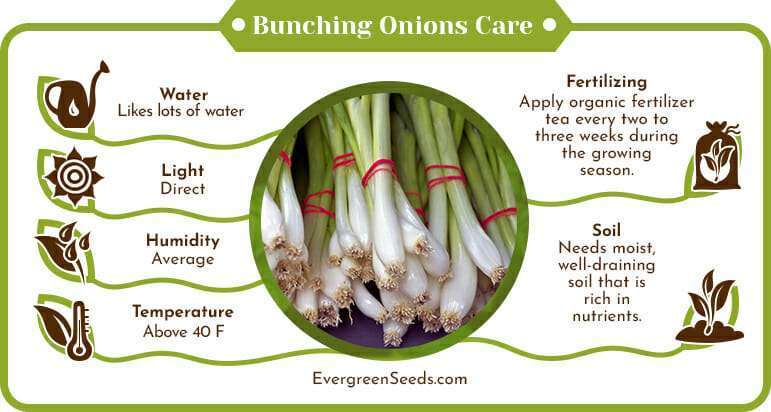 Bunching onion of the Amaryllidaceae family – AKA long green onion, Japanese bunching onion, spring onion, Allium fistulosum, and Welsh onion- is a common and quickly grown onion species of the Allium genus you’ll love planting in your garden.
Bunching onion of the Amaryllidaceae family – AKA long green onion, Japanese bunching onion, spring onion, Allium fistulosum, and Welsh onion- is a common and quickly grown onion species of the Allium genus you’ll love planting in your garden.
Bunching onions are an ideal way to grow delicious onions that can help protect other plants in your garden. There is a lot of confusion out there about what a bunching onion is, why it’s different from other onions, and how to grow green bunching onions at home successfully.
This guide will give you all the information you need to prepare the perfect garden bed for growing onions.
We will tell you when to plant bunching onion seeds, how to grow tasty white bunching onions, the right way to harvest bunching onions, and even how to use and store them so you can have flavorful additions year-round, no matter where you live.
JUMP TO TOPIC
- What are Bunching Onions?
- How to Grow Bunching Onions
- Starting Bunching Onion from Division
- Soil Conditions
- How to Water Bunching Onions
- Tips for Growing Flavorful Bunching Onions
- How to Store Fresh Bunching Onions
- Pests and Diseases Common to Bunching Onions
- Bunching Onions as Companion Plants
- Culinary Uses of Bunching Onions
What are Bunching Onions?
Bunching onions are a type of onion that originates from Japan and is a culinary favorite worldwide. Bunching onions are one of many varieties of Allium that can be called scallions, a generic term that applies to onion plants that do not form a large bulb.
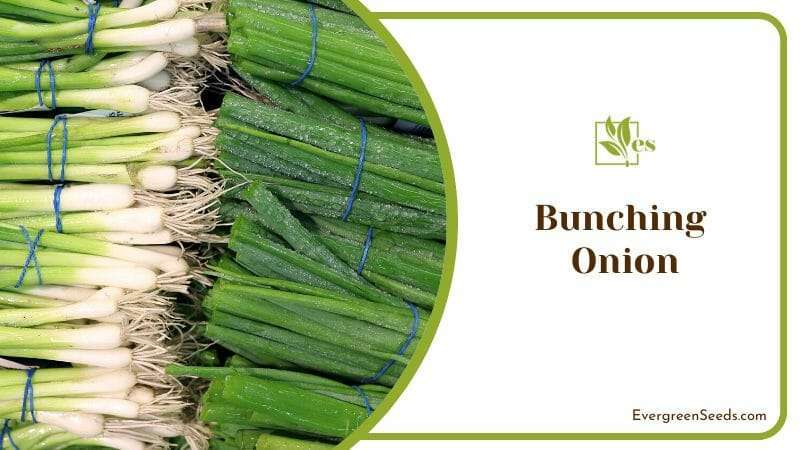 Japanese green bunching onions grow bright green, hollow stalks and eventually form greenish-white flowers. There are several different types of bunching onions on the market, giving gardeners a nice variety for planting.
Japanese green bunching onions grow bright green, hollow stalks and eventually form greenish-white flowers. There are several different types of bunching onions on the market, giving gardeners a nice variety for planting.
Bunching onions are closely related to leeks, shallots, garlic, Chinese chives, and Chinese onions.
True bunching onion varieties have a more mild taste than regular onions. Bunching onions are eaten raw and are an essential ingredient in many types of dishes worldwide. A variety of crosses and selective breeding means many types of bunching onion gardeners have from which to choose.
Why are They Called Bunching Welsh Onions?
Many people assume that bunching onions originate from Wales in Great Britain, but the ancient Chinese were the first to cultivate bunching onions.
The use of Welch in the name refers to a pre-Germanic word Walhaz, indicating the onions were “foreign” onions in Europe during the reign of the Roman Empire.
The use of the word bunching does not refer to how they grow but rather the way the onions are gathered and sold in bunches. Bulbing onions are usually sold individually rather than in bunches.
Types of Bunching Onions
In the U.S., bunching onions are one of the more common types available in stores. Even though it’s not a bunching onion, regular white onions grown close together and pulled while immature can be sold as bunching types or scallions. You can tell the difference between regular onions and spring onions by examining the stalk near the root bulb- bunching types are O-shaped while common onions are D-shaped.
There are many popular varieties of green spring onions within the bunching family of onions
Each type offers certain advantages, but any variety is an excellent choice for the home gardener who desires an easy-to-grow crop that provides versatility for many different kinds of meals.
1. Evergreen Long White:
The Evergreen Long White bunching onion is an heirloom variety that grows 12″-14″ spring green stalks. It’s particularly cold-hardy and can overwinter in many growing regions. It will mature in about 60 days.
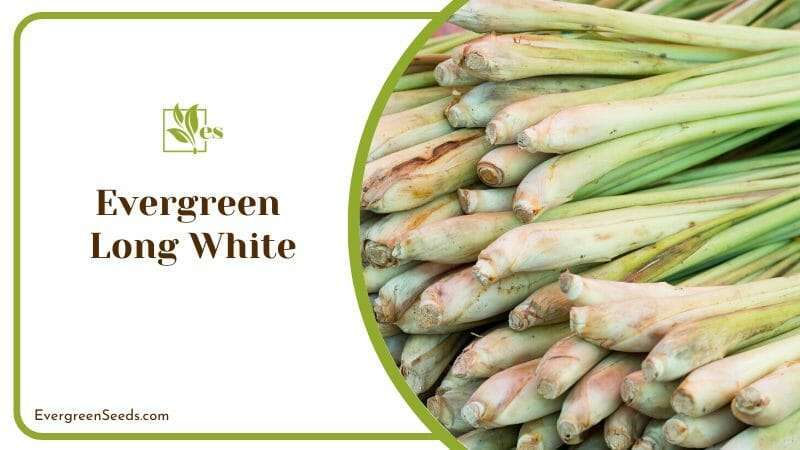
2. Tokyo Long White:
This variety is one of the best choices for home gardeners living in hot climates. It’s an heirloom variety that features a long white stalk with dark blue-green stalks. It has a mild flavor and matures in about 70 days.
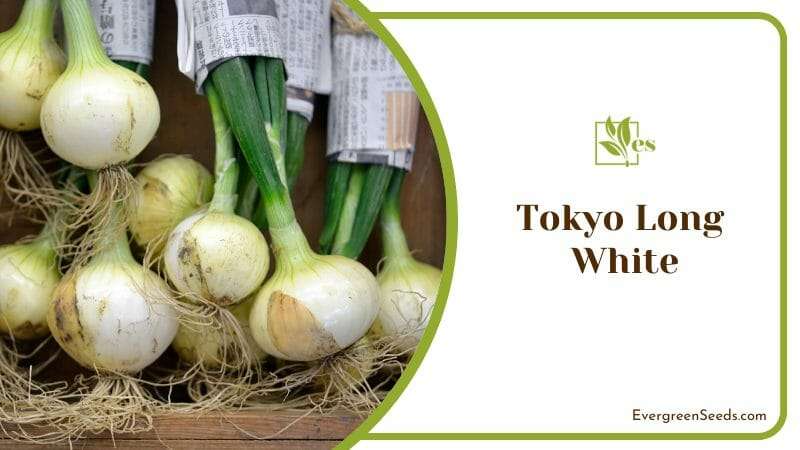
3. Deep Purple:
The Deep Purple bunching onion variety is a popular way to add a dash of color to your garden or meal. This variety develops a dark purple root regardless of temperature and is one of the more recent bunching onion types. It matures in 60 days.
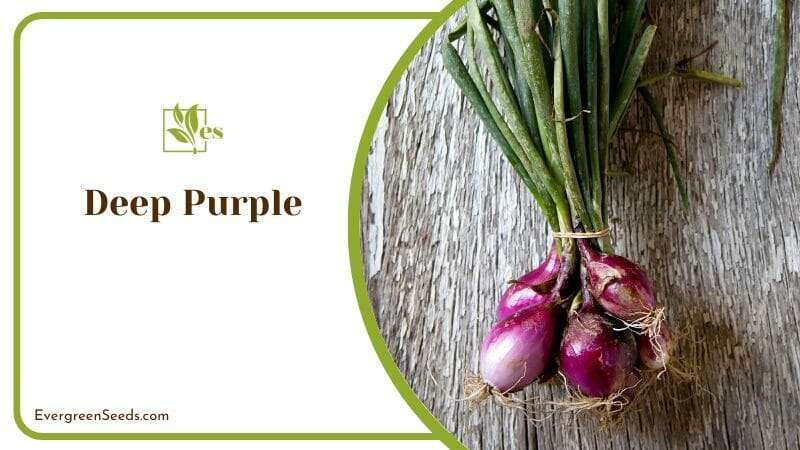
4. Red Welsh:
The Red Welsh bunching onion is both cold and heat tolerant. It’s a popular ingredient due to the sharp onion flavor and beautiful red root ball. The variety is popular both for its outstanding flavor and the deep red stalks.
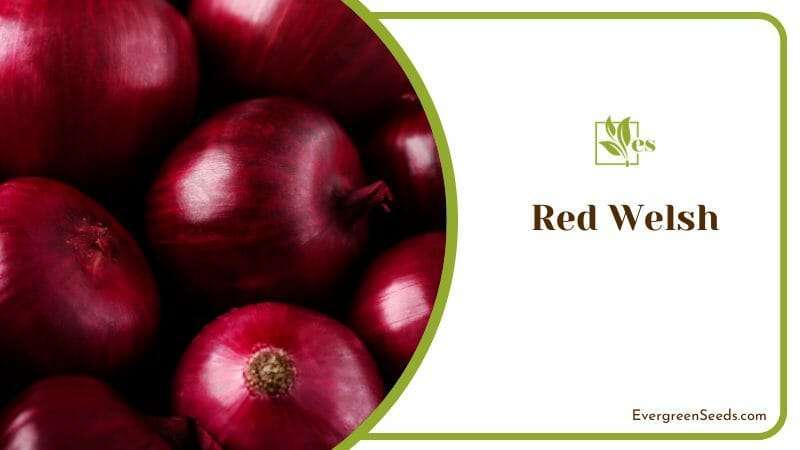
5. Guardsman:
The Guardsman bunching onion is one of the fastest-growing varieties around and can reach maturity in 45 days. This variety will overwinter very well in most places and will be one of the first spring plants in your garden. Guardsman is a cross with bulbing onions and will create a small, pearl-like bulb.
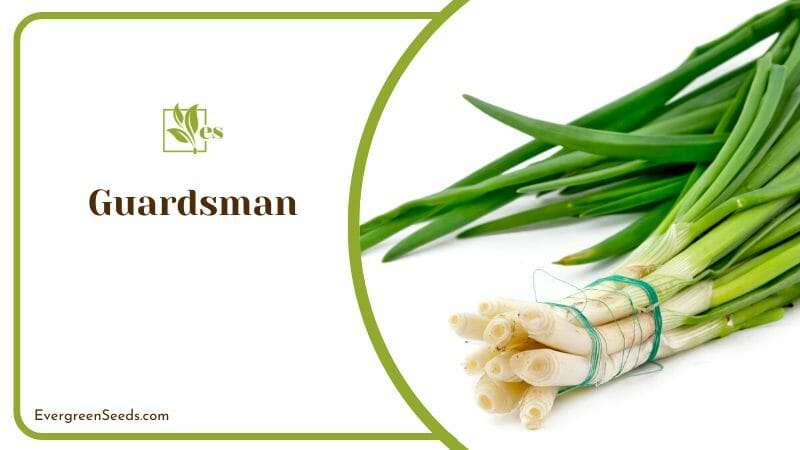
6. Nabechan:
The Nabechan exhibits a sweet, complex flavor, and it’s resistant to high heat. It’s a traditional Japanese variety commonly grown from seed in the U.S. It matures in about 60 days. In Japan, blanch Nabechan like leeks and call it “negi.”
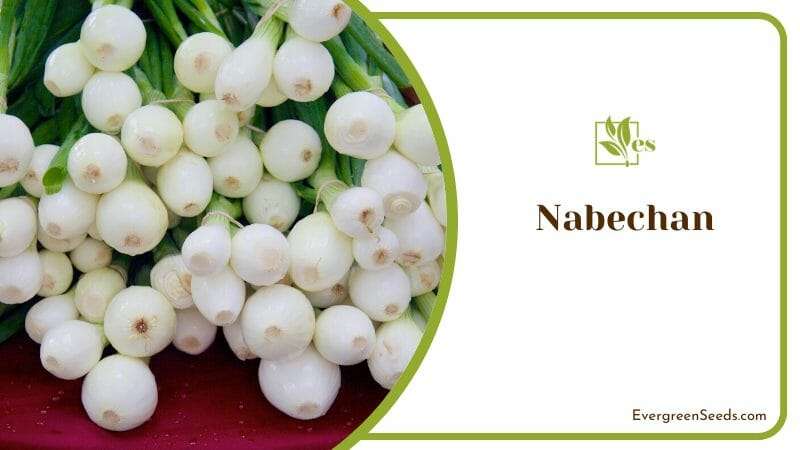
How to Grow Bunching Onions
Onions are one of the more rewarding plants you can grow in your garden. Bunching varieties are typically hardy, and they are easy to grow from seed or division. Plus, different techniques for growing bunching onions can result in different flavors, even from the same variety.
Home gardeners can use this guide to prepare their garden for growing onions, then plant and harvest the best-tasting bunching varieties for use in all sorts of meals.
We’ll even let you know the best way to store your favorite bunching onion types and let you know how to use them in the meals you make for your family. After reading this guide, you’ll learn everything you need to know to grow bunching onions in your garden at home.
Starting Bunching Onion from Seed
One of the best ways to start your onion garden is by sprouting onion seeds. Gardeners can take advantage of the numerous different varieties of bunching onions by growing from seed. It’s a good practice to purchase seed from a reputable seed company that ensures disease-free products. You can start seeds indoors or direct-seed in your garden.
Starting Onion Seeds Indoors
Many varieties of bunching onion are cold-tolerant, but young plants will suffer during freezes. In parts of the country that experience periodic freezes in late winter and early spring, gardeners will have the most success starting onion seeds indoors. The best way to start onions indoors is to use a tray with regular potting soil and a plant-growing light fixture that provides a full-spectrum of natural light.
Onion seeds are tiny, so the easiest way to start them is to sprinkle seeds on the surface of your planting tray and then lightly cover with potting soil. Onion seeds need 8-16 hours of light per day to germinate and require at least 8 hours of darkness. The optimum soil temperature for starting onion seeds is between 65 degrees and 75 degrees Fahrenheit. Avoid using incandescent light bulbs because they do not offer the proper light spectrum for growing onions.
How to Plant Bunching Onions
Transplanting Bunching Onion Seedlings
You can transplant your onion seedlings when they are about the thickness of a pencil. Onions have shallow, poorly-formed roots, so translate gently. You can plant Japanese bunching onions on a mound or in a trough. Gardeners should make sure the soil is moist but not wet when they transplant bunching onions. Set seedlings two to six inches apart.
Starting Onion Seeds in the Garden
Once the soil is workable, you can sow the onion seeds directly. You should use a fork to loosen the soil to a depth of about 12-inches and mix in a high-quality compost. You can count on good production once daytime temperatures are above 40 degrees. The best way to sow the tiny onion seeds is to sprinkle them in rows, then cover lightly with topsoil. Thin seedlings to two to three inches when they are about six inches tall.
When to Plant Bunching Onions
Unlike many types of plants, onions are particularly successful in cold environments. Seeds started indoors can be as early as six weeks before the last frost, and many varieties will overwinter, providing some of the first signs of spring when young, green onion shoots appear. The best way to know when to plant your bunching onions in your area is to use the USDA Hardiness zone identifier online and compare that information with the growing requirements the seed company provides.
Onion growth is stagnant during hot months, and it’s best to avoid planting onions when the weather is going to get hot. In many regions in the U.S., particularly the south and southwest, onions can be grown in two seasons, the first in spring and the second in fall, with harvest before the first frost. Colder, northern climates should use row cover or start seeds in a greenhouse to get the most out of the onion season.
Starting Bunching Onion from Division
Here is a neat trick you can use at home to get great bunching onions in your garden, easy and cheap. When you find many onions at the store, cut off the green parts leaving about one inch of white stalk. Using a sharp, clean knife, quarter the onion bulb, let it soak in water for a few hours. You can then plant the onion quarters in your garden, and they will regrow, providing you lots of onions all season long. Bunching onions will typically regrow if cut off at the stalk, so you can also replant the bulb from the onion you grow as seed.
Can Bunching Onions Grow in Containers
Bunching onions are one of the best choices for growing in pots and containers. These plants do not develop large root structures, so they don’t need a lot of depth. The upright growth of onions also makes them ideal for container growing because you can get many plants in a small area. Gardeners looking to grow bunching onions in containers need to remember that onions are hungry plants- you’ll need to plan on providing fertilizer several times during the growing season.
Any container that is 10″ deep or more will be suitable for growing bunching onions. You should make sure that your container has plenty of drainages, but not so much that the onions dry out quickly. The use of a water bulb is handy to monitor the amount of water in the soil at any time.
 Soil Conditions
Soil Conditions
Bunching onions are known to grow in a wide variety of soil types. They do best in loamy, fertile soil with a near-neutral pH. Gardeners can treat soil the autumn previous to planting by turning a good-quality compost into the soil and covering the area you want to plant with organic mulch or a weed barrier. Doing this step prevents weeds from growing and can choke out young seedlings and keep the soil ready for planting in the spring.
 How to Water Bunching Onions
How to Water Bunching Onions
Onions like lots of water, so you should keep the soil from drying out. Moist soil is ideal for growing bunching onions, but the soil should drain well to prevent puddling. Unlike most types of plants, gardeners should spray the greens with water. A good jet of water helps deter pests and hydrates the plant.
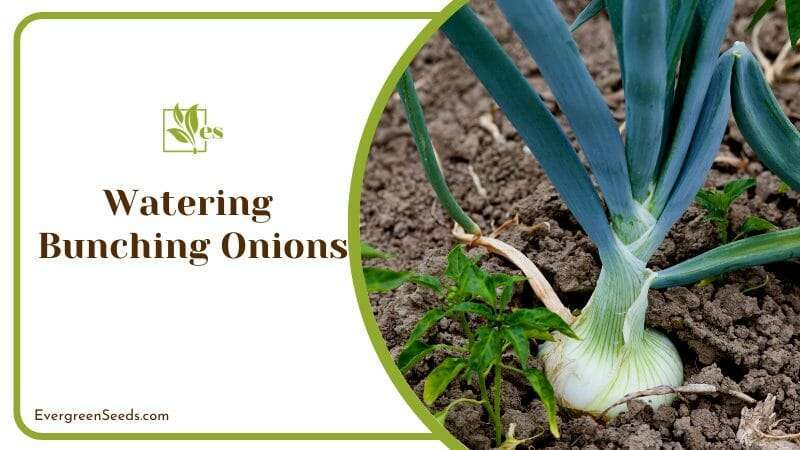
It’s a good idea to use a fertilizer tea during the growing season every two to three weeks. You can gently pour the tea around plant bases. Bunching onions are hungry plants and will deplete nutrients from the soil. You can build the soil up by using an organic fertilizer while watering your onions.
Tips for Growing Flavorful Bunching Onions
Bunching onions can be grown like leeks to blanch the stalks. Growing bunching onions like leeks will produce a longer white stalk that is more flavorful than the green portions. The trick to growing blanched bunching onions is to mound soil up to the top of the shooting stalks as they grow. Gardeners will bury four to six inches of the green portion over the first month of growth to create a longer white stalk.
When to Harvest Bunching Onions
Bunching onion varieties are ready for harvest at different times depending on the type, but most will be ready around 60 days. You’ll know that your bunching onions are ready to harvest when the green stalks are 12-inches tall or longer. It’s okay if your bunching onions flower, the flavor will not change. You can harvest and eat onion flowers, though they are a little dry.
How to Harvest Bunching Onion
The easiest way to harvest bunching onions growing in rows in your garden is with a fork. You can lift the soil and loosen the bulbs from the soil. You can collect the onions by hand. Commercial growers typically bunch onions in the field.
Hand harvesting of bunching onions is often the most practical way for the home gardener to harvest bunching onions. When you harvest bunching onions, you need to process them reasonably quickly. Within a few hours, onions will begin to wilt if you don’t handle them correctly.
Processing Bunching Onions
Immediately after you pick your bunching onions, you should rinse the roots clear of dirt and make sure the stalks are clean. Trim off the green end and put the bunching onions in the refrigerator. When you are ready to use your bunching onions in a meal, slice off the root bulb. You can put the cut bulb in a jar with a little water and set it on a windowsill to grow bunching onions indoors.
How to Store Fresh Bunching Onions
The best way to store bunching onions is to slice them into one-quarter-inch pieces and put them in a ziplock bag. You can also store green onions in a bowl with a tight-fitting lid. The trick is to make sure you keep moisture in the onions without letting them rot. Green onions will keep for about five days in the refrigerator. It’s always best to use green onions as quickly as you can.
Pests and Diseases Common to Bunching Onions
Bunching onions are resistant to many common pests in your garden. They are also fairly free of disease. Gardeners should learn the signs of pests and diseases to identify problems before an infestation happens quickly.
– Pests
The most common pests that feast on bunching onions are worms that tunnel into the bulb. Usually, you won’t know that you have worms until it’s too late. You’ll notice holes in the bulbs and hollow centers when worms are the problem. The best way to treat worms is by flooding the area where worms are a problem.
Aphids may attack bunching onion plants. The best way to organically destroy aphids is to use a sprinkle of diatomaceous earth in between waterings. An insecticide spray can also be useful in controlling aphids. If aphids are a problem in your onion garden, you should replant next season with a non-Allium species to prevent a reinfestation.
– Diseases
Bunching onions have very few disease concerns. Unlike many plants, onions are not typically inflicted with mildew. A common problem with onion crops is pink root rot. This type of rot appears as a white or pink film at the root base. Stalks will dehydrate and fall over, eventually turning yellow and dying. The only way to treat pink root rot is by treating the soil. You should remove infected plants and destroy them.
Bunching Onions as Companion Plants
A traditional practice that is growing in popularity with modern gardeners is using companion plants in their garden. Bunching onions are particularly useful as a companion plant because they deter many pests attracted to other valuable crops.
Bunching onions make an excellent companion plant to tomatoes, brassica plants like lettuce and mustard greens, strawberries, and pepper plants because they deter common pests that can quickly destroy crops. Gardeners should not plant bunching onions with legume species like beans and peas. Gardeners should also avoid planting bunching onions near sage and asparagus because the onions will affect these plants’ flavor.
Culinary Uses of Bunching Onions
The green stalks are the most common part of white bunching onions in recipes. The typical preparation is to slice the stalks into strips. The cut greens can be added to cooked dishes, or you can use them as a flavorful garnish. Fresh green bunching onion is excellent on buttery mashed potatoes, topping crema de agria on a spicy Asado burrito, and any other recipe that can use a zing of onion flavor.
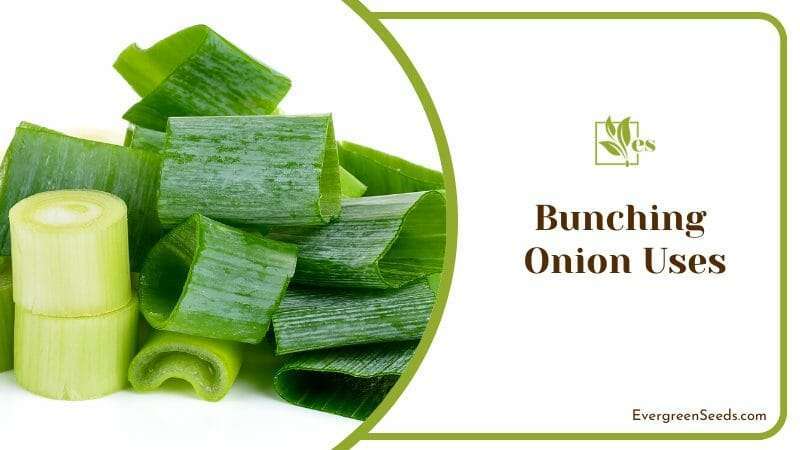
The entire bulb and stalks can be grilled with light oil, coarse salt, and cracked black pepper or braised butter and garlic for a tasty snack. Spring onion curry is a popular use of cooked bunching onions in India.












